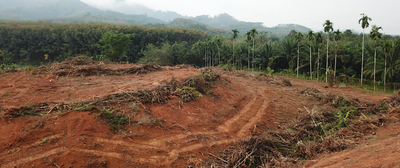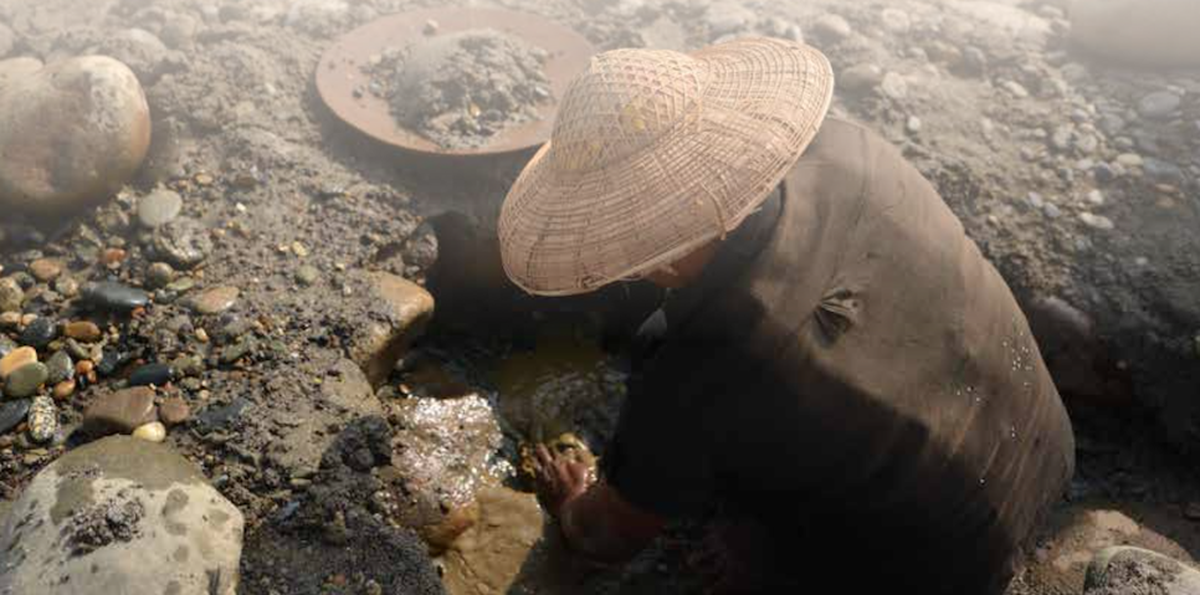
Gold mining and mercury contamination : Cost to the health ofthe environment and communities
For more than two decades, Myanmar has been facing over-exploitation of natural resources.
Underdevelopment and lack of regulation contribute to rampant over-mining of Myanmar’s rich reserves of gold, metals, minerals and gems, including rare earth, heavy metals, jade and ruby. Artisanal small-scale mining (ASM) dominates the mining sector in Myanmar. The industry value is estimated to be more than 1.2 billion USD. Abundant ASM activities and widespread malpractice in purifying gold and other minerals suggest that high levels of contaminants are released into the environment. This leads to many adverse health and environmental impacts.
Despite being mercury being legally controlled in Myanmar under Section 5 Subsection (H) of the Prevention of Hazard from Chemical and Related Substances Law, this harmful chemical is widely used and appears to be imported illegally from neighbouring countries.

How is Mercury used in gold mining?
Using mercury amalgamation is a common practice for gold refinement in ASM. Gold ore and mercury are mixed to form an alloy burnt by miners, causing the mercury to evaporate, separating the gold from waste rock, soil and other sediments.
Mercury can also be added during the cyanidation process, where the miners squeeze the amalgam, often by hand, and then burnt it to obtain pure gold.
What are the dangers of Mercury ?
Mercury is highly toxic. It can result in serious environmental impacts and public health if released into the environment. Mercury spills from mining activities have resulted in major fish kills, contaminated drinking water and harmed agricultural lands.
Artisanal Small-scale Gold Mining (ASGM) has become one of the fastest-growing sources of mercury contamination of water and terrestrial ecosystems.
For example
- Philippines - in 2007, annual ASGM emissions of mercury in different mining sites were between 5 t and 140 t leading to the direct contamination of soil and water, and indirectly affecting thousands of people and children.
- Indonesia - 110,000 tons of toxic mine tailing were dumped into the Ajikwa river from the Grasber gold mine, causing over $13 billion of environmental damages and stripping communities of over 100,000 hectares of land.
- Thailand - Near the Chatree gold mine, more than 700 hundred residents have been tested for contamination and over half of them and 3⁄4 of the children tested had higher-then-normal levels of heavy metals contamination. These caused severe illness in the nearby communities, including breathing fatigue and skin diseases.
How mercury enters in the systems and pollutes people and the environment
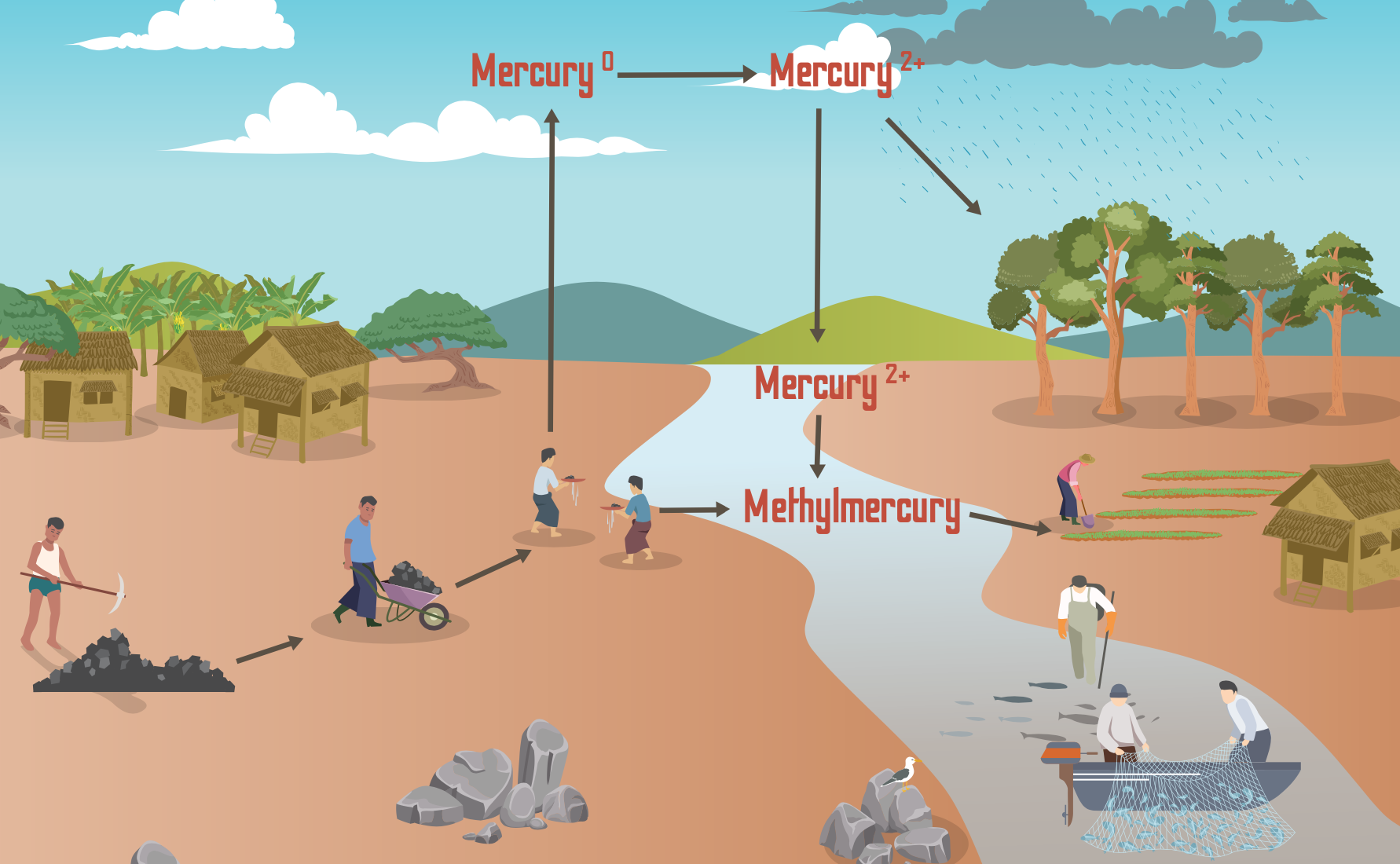
What are the health impacts ofmercury exposure?
Mercury exposure from the extraction of ores and waste severely impacts human health. It affects the physiology of the nervous, immune and digestive systems. Exposure to mercury for a long period of time and with higher than normal contraction is dangerous for people of all ages, particularly women of reproductive age, foetuses and children. Mercury can cause:
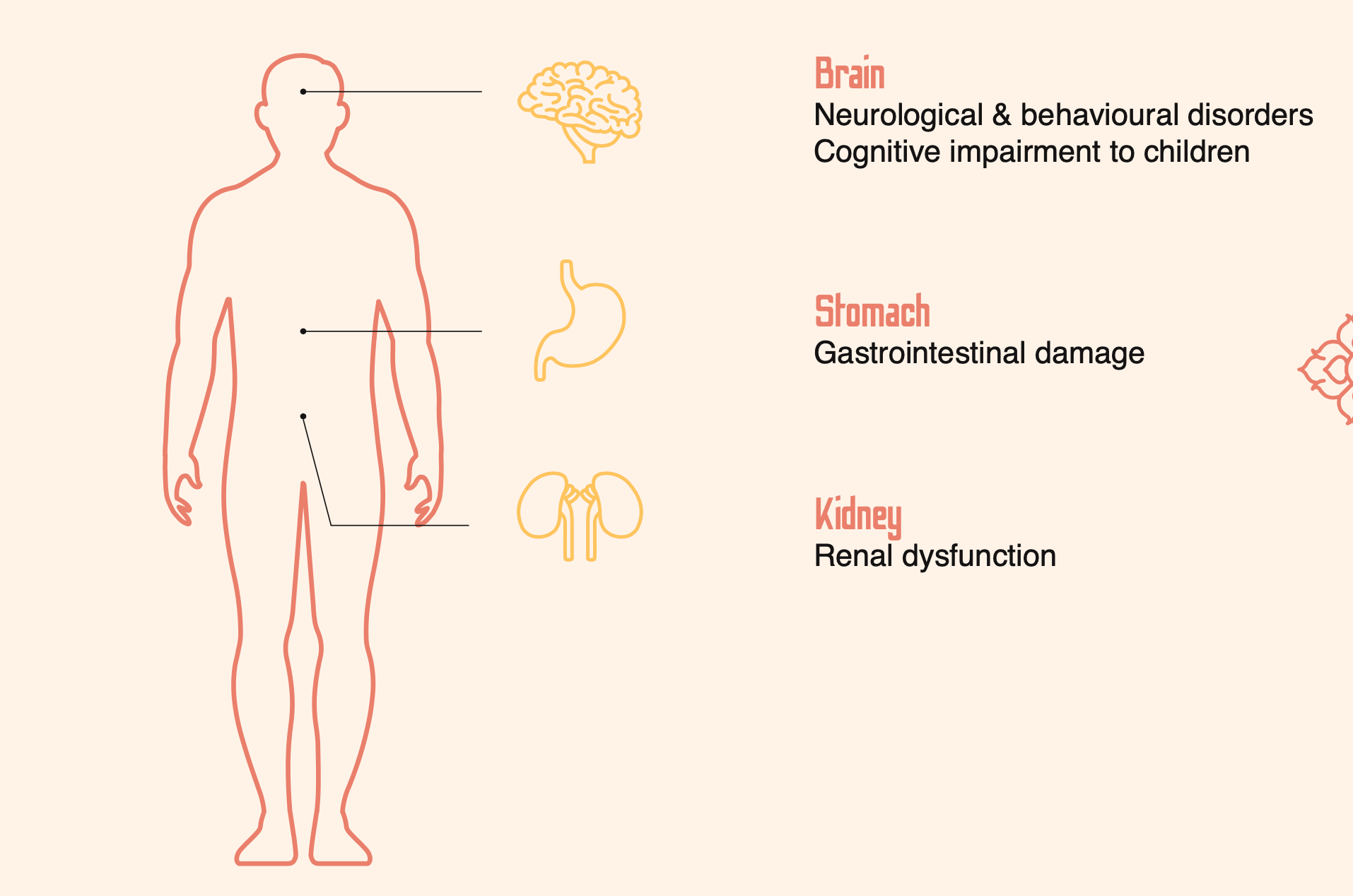
-
Neurological and behavioural disorders such as memory loss and degenerative diseases including Alzheimer’s disease, Parkisonìs disease, insomnia, tremor, headaches, motor dysfunctions;
-
Renal dysfunction, kidney failure and cancer;
-
Gastrointestinal damage
-
Pregnant women can experience a deformation of the foetus and/or its death;
-
Cognitive impairment to children if they consume contaminated fish;
-
Emotional changes
How does mercury exposure affect our environment and wildlife?
The presence of heavy metals like mercury affects soil quality and reduces its fertility. Mine runoff and the release of chemicals into the water through drainage can acidify the water, having severe detrimental effects on water quality and freshwater species.
Abandoned mines also pose ongoing environmental hazards for the same reasons as above. The side effects of such activities as pollution do not easily disappear without site rehabilitation interventions.
Plants can serve as bioindicators as they take water and other nutrients from the soil, and/ or air.
Here are some potential impacts of chemicals on the environment:
-
Local loss of fish species
-
Loss of invertebrate species upon which fish feed
-
Decreased water clarity (turbidity)
-
Damage to both freshwater and terrestrial species including increasing diseases within the populations e.g. of fish
-
Disrupt microbial population within the soil, causing negative impacts on soil fertility and quality
-
Accumulation of contaminants in animal tissues which can harm them and which can be carried to human consumers
-
Loss of yield and quality of crops and plants due to contaminated soil
Artisanal small-scale mining (ASM) extracts gold using several methods, such as sluicing, panning, river mining with dredges, and hydraulic mining.
Gold can be found in river sediments and hard-rock deposits. The primary and simplest method to extract gold ore is through excavation via underground or open-pit mining.

Once excavated, the gold ore is then crushed using a powdering machine. The resulting powder is then put in a pan with water, and the gold molecules are then separated through gravity.
The gold particles settle at the bottom of the pan together with sand. To separate the gold, mercury (or sometimes cyanide) is added to the pan to form an amalgam with gold and easily extract it. To obtain pure gold, the amalgam is then vapourised through a burner, realising mercury vapour into the atmosphere and in the environment once it deposits.
4 steps to prevent and reduce harm to the people and the environment
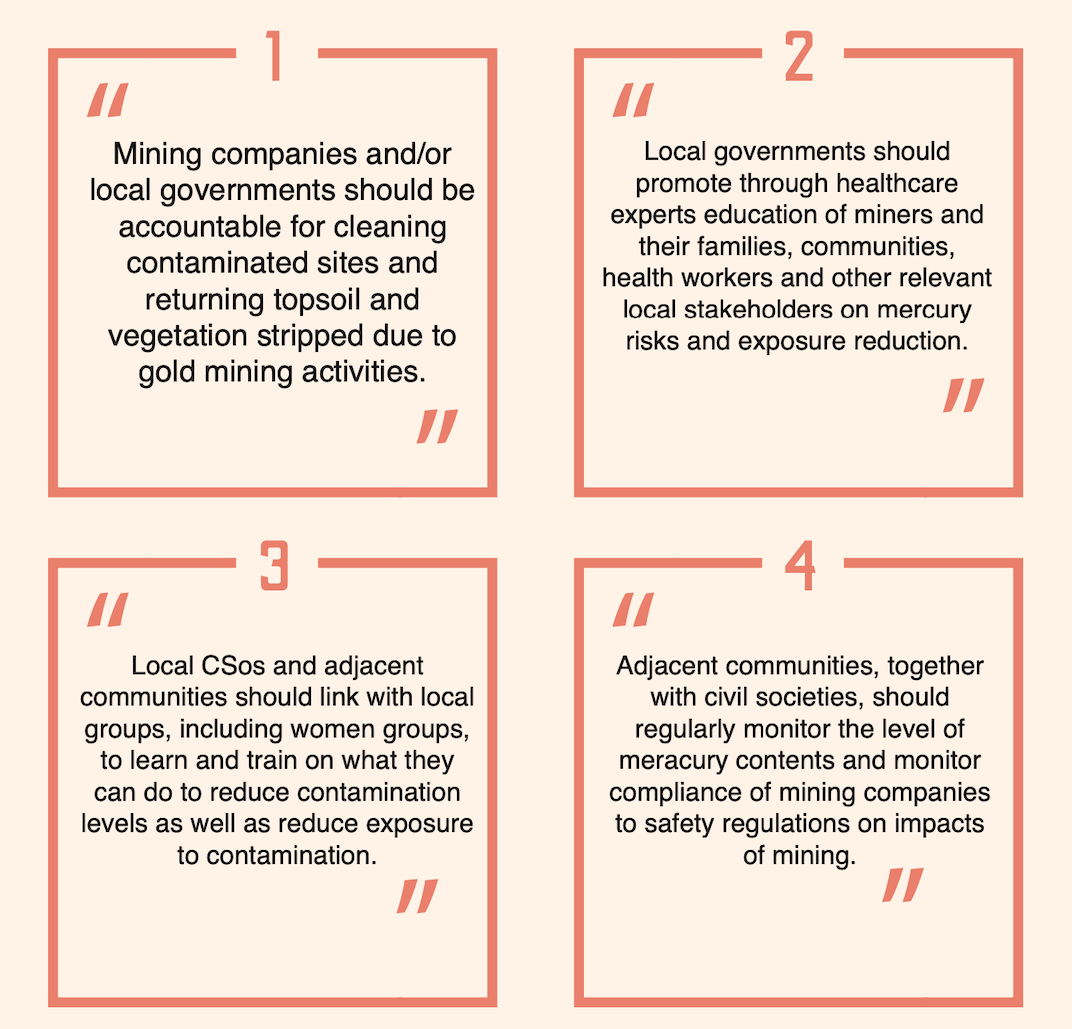
Our efforts in Myanmar today will determine our success tomorrow. Submit the record here now to help track changes in Myanmar’s natural world.
References
EITI
PACT (2018). State of Artisanal Mining in Myanmar
MCRB. (2018). Sector Wide Impact Assessment of Limestone, Gold and Tin Mining in Myanmar. Yangon: Myanmar Centre for Responsible Business (MCRB)
United Nations Environment Programme (UNEP). Global Mercury Assessment 2018; United Nations: New York, NY, USA, 2019.
Bant toxics! (2011). The price of gold: Mercury Use and Current Issues Surrounding Artisanal and Small-Scale Gold Mining in the Philippines https://news.mongabay.com/2017/10/grasberg-mines-rich- es-still-a-distant-glitter-for-papuan-communities/ https://www.eco-business.com/news/thai-gold-mine-set-to-re- open-even-as-locals-reel-from-heavy-metal-poisoning/
Silva-Rêgo LL, Almeida LA, Gasparotto J (2022) Toxicological effects of mining hazard elements. Eng Geosci 3(3):255–262
Rama Karn et al. (2021). A review on heavy metal contamination at mining sites and remedial techniques. IOP Conf. Ser.:Earth Environ. Sci. 796


